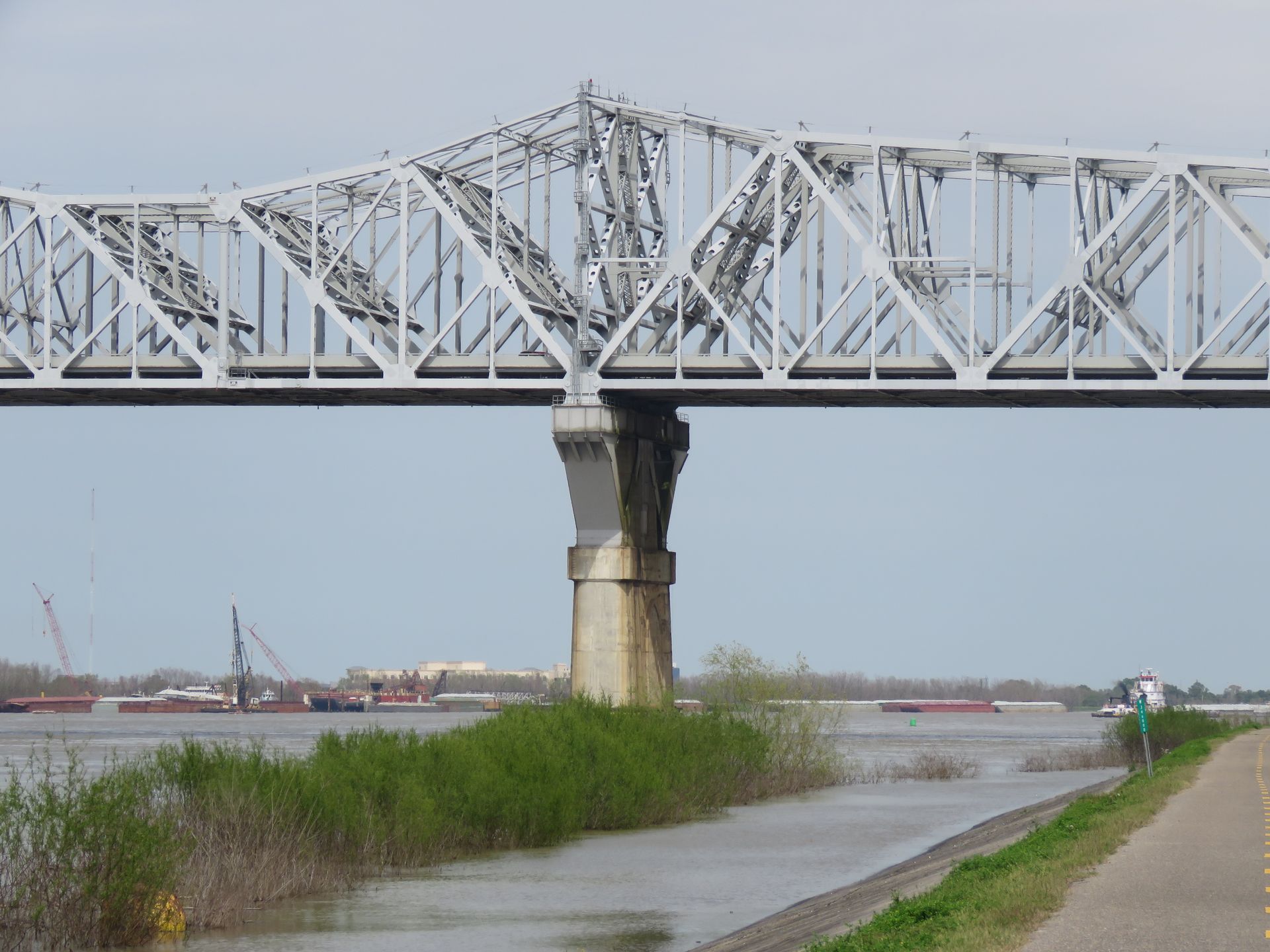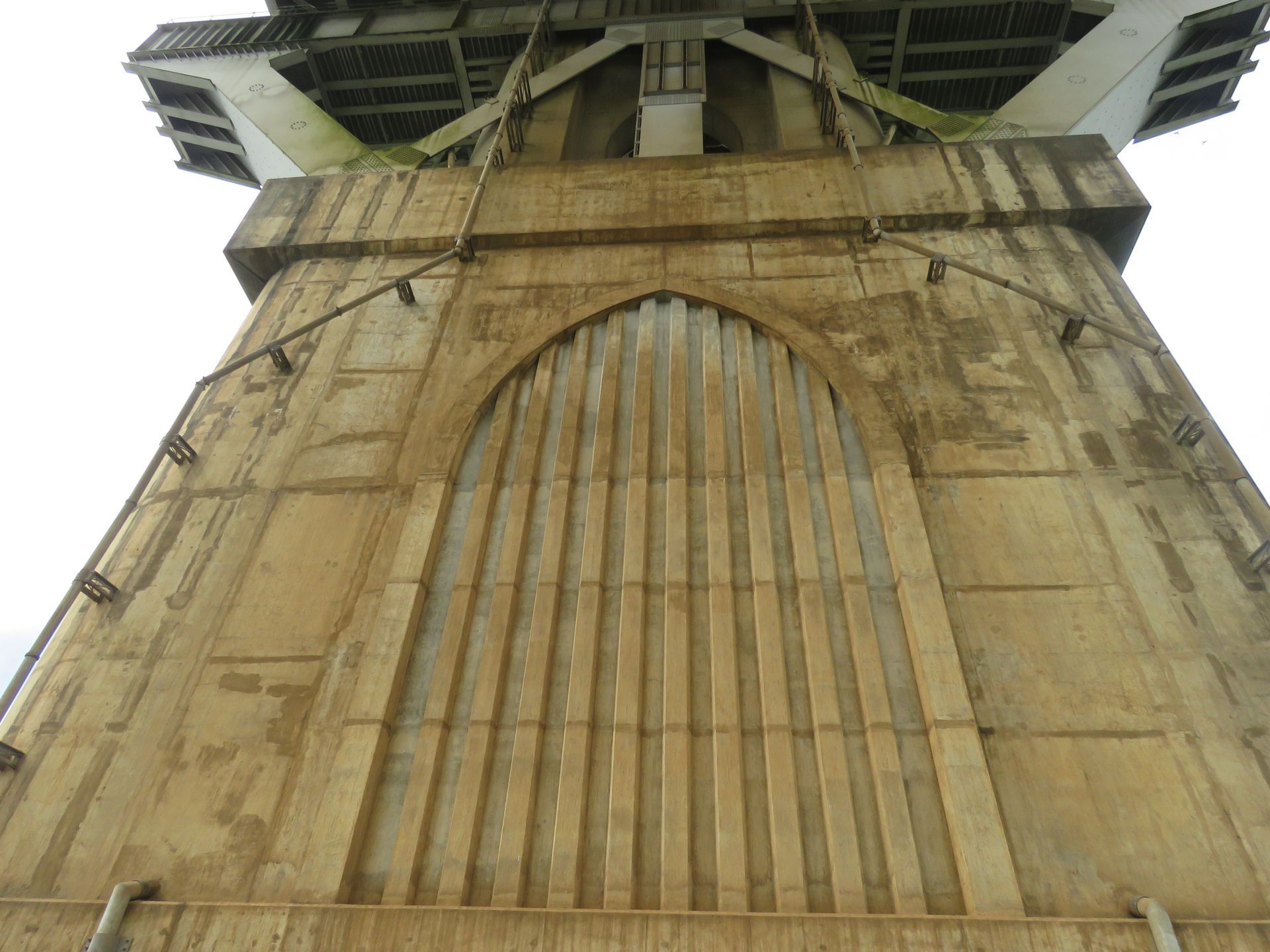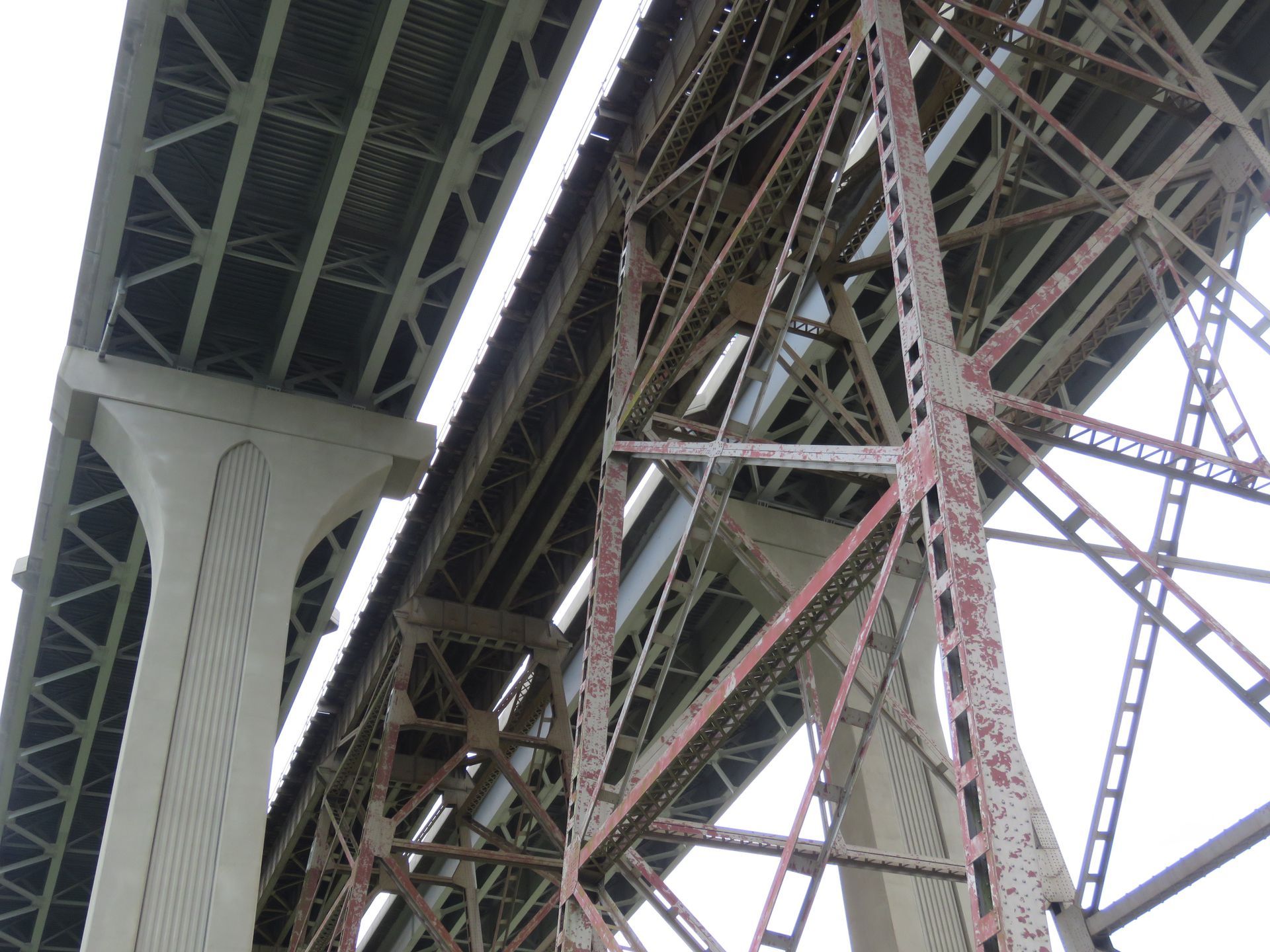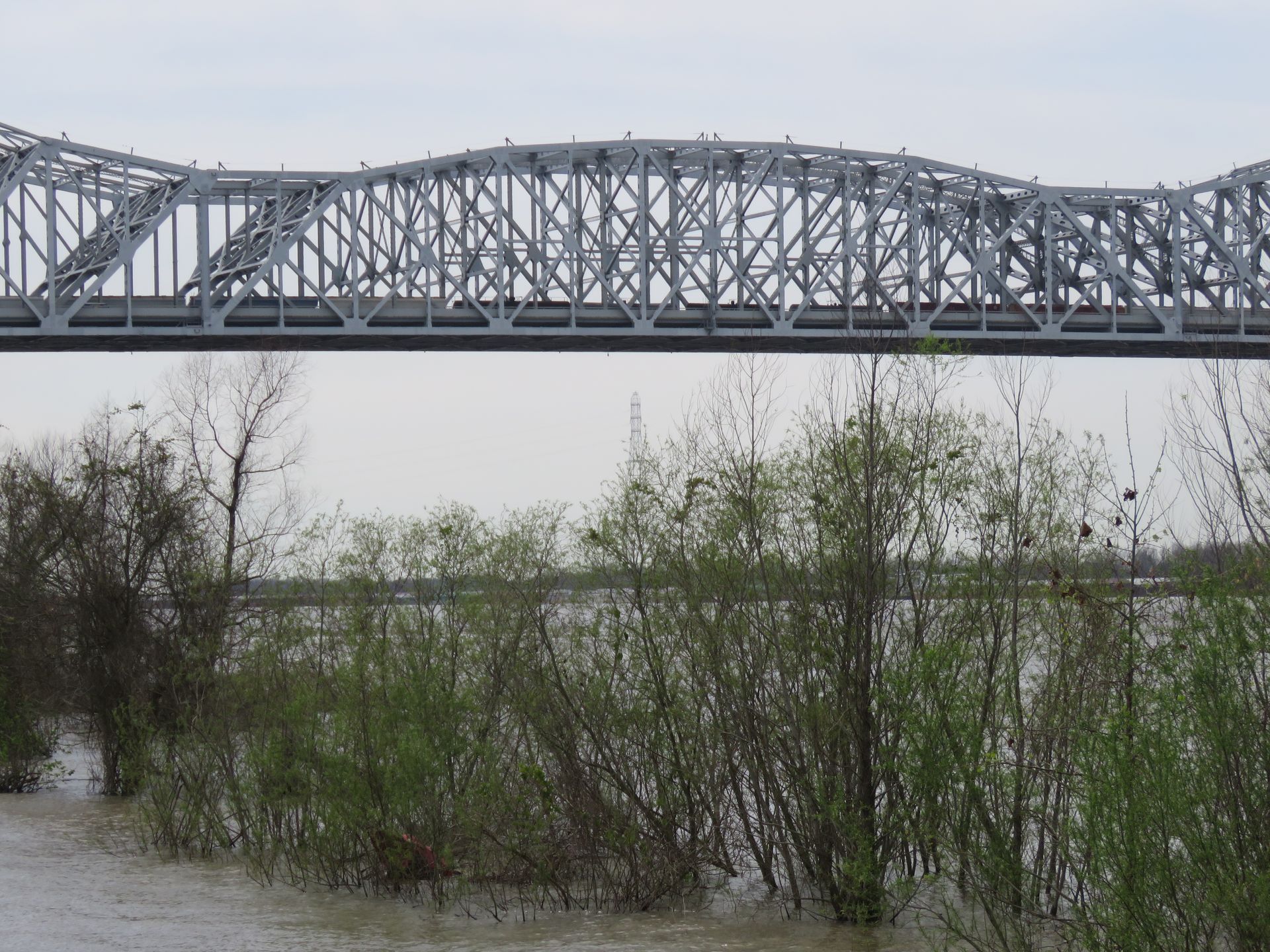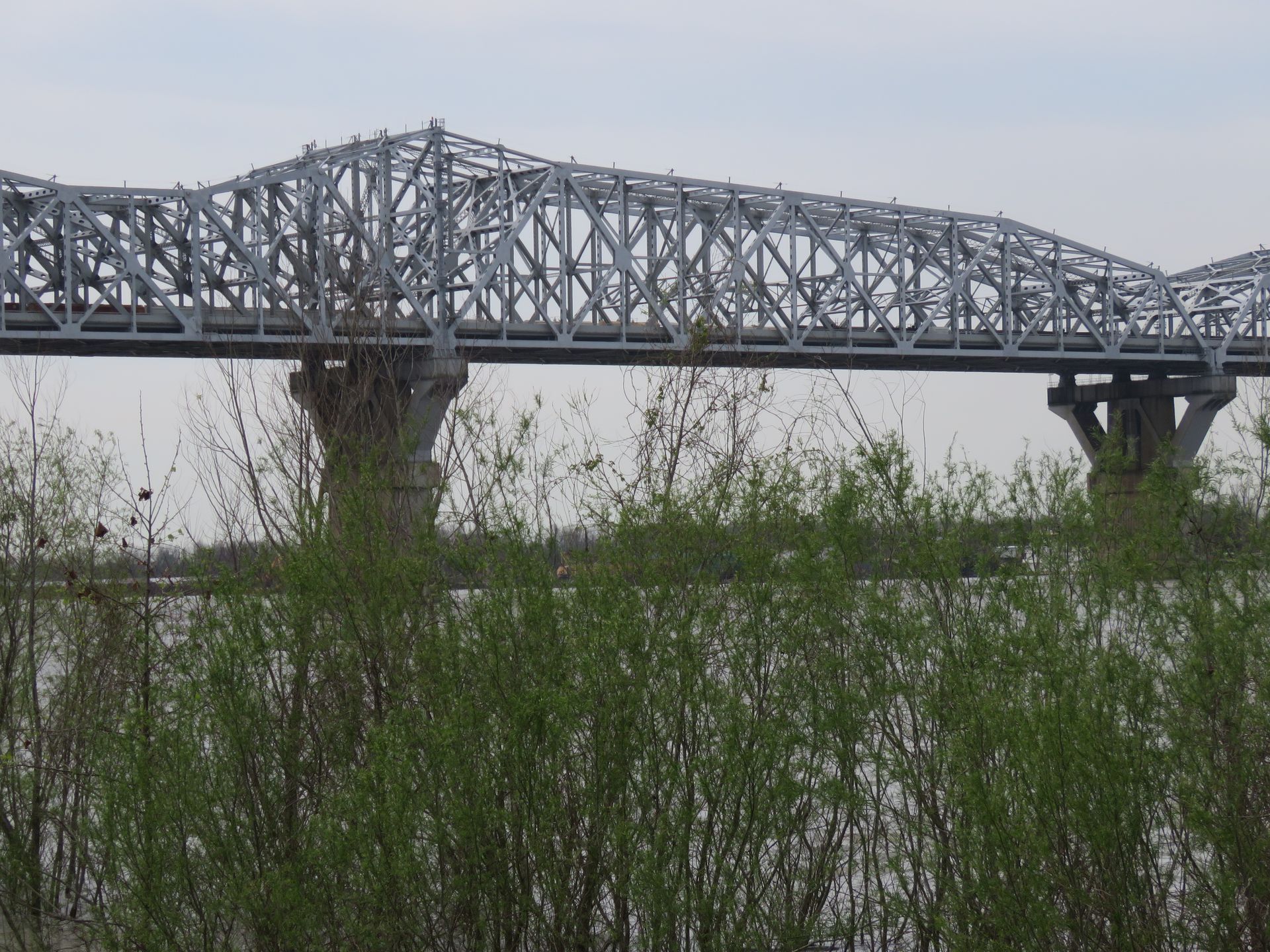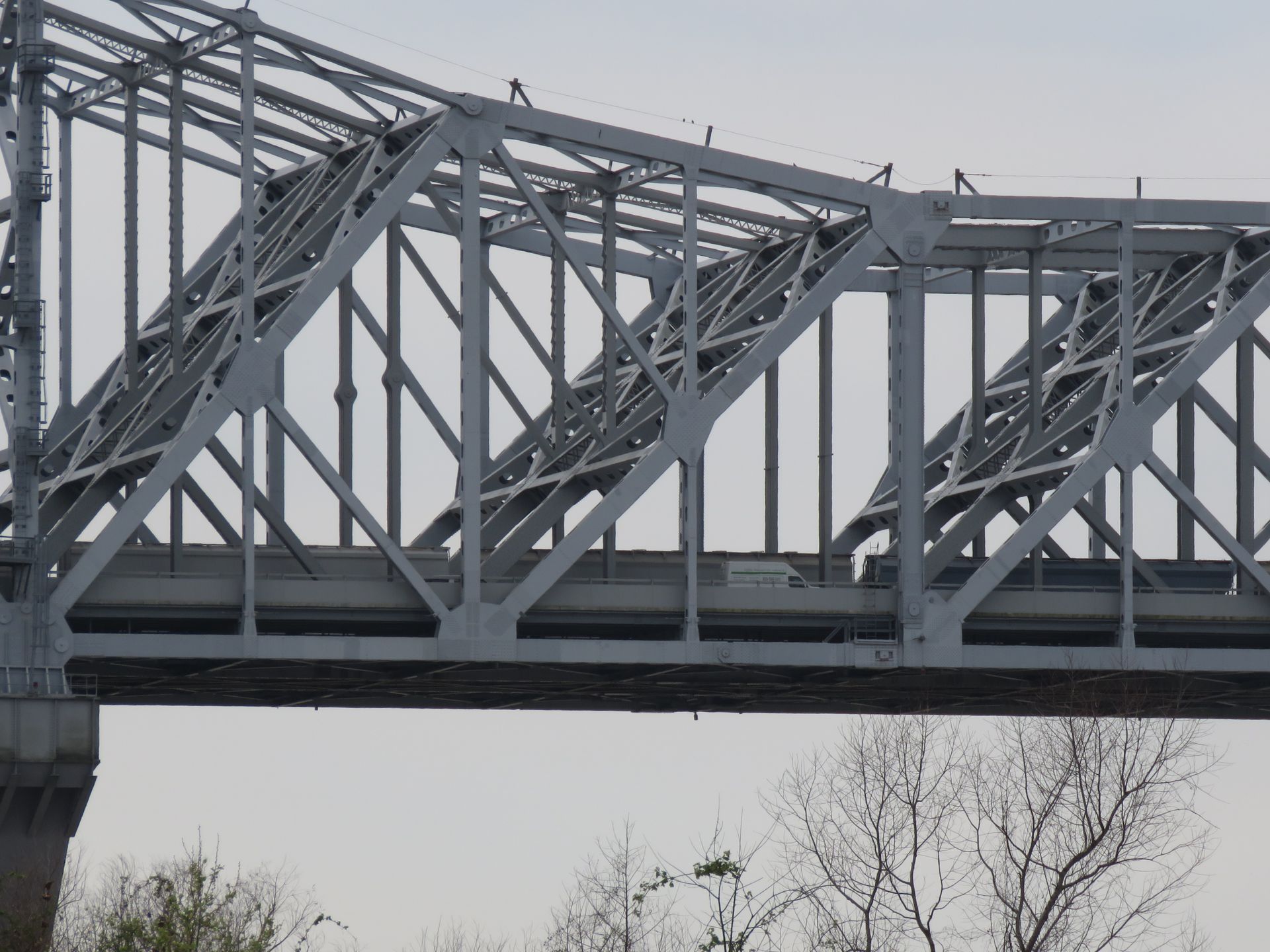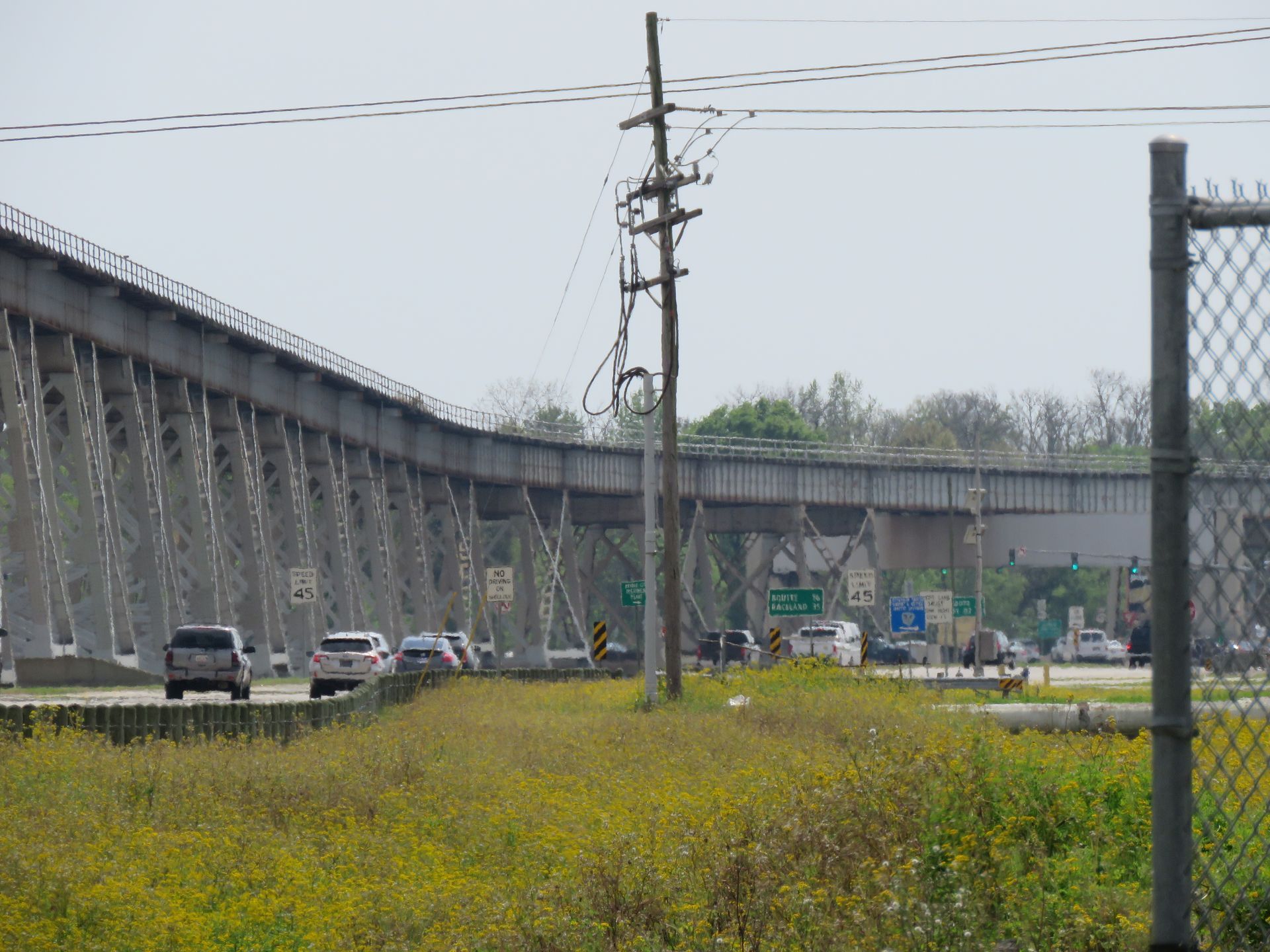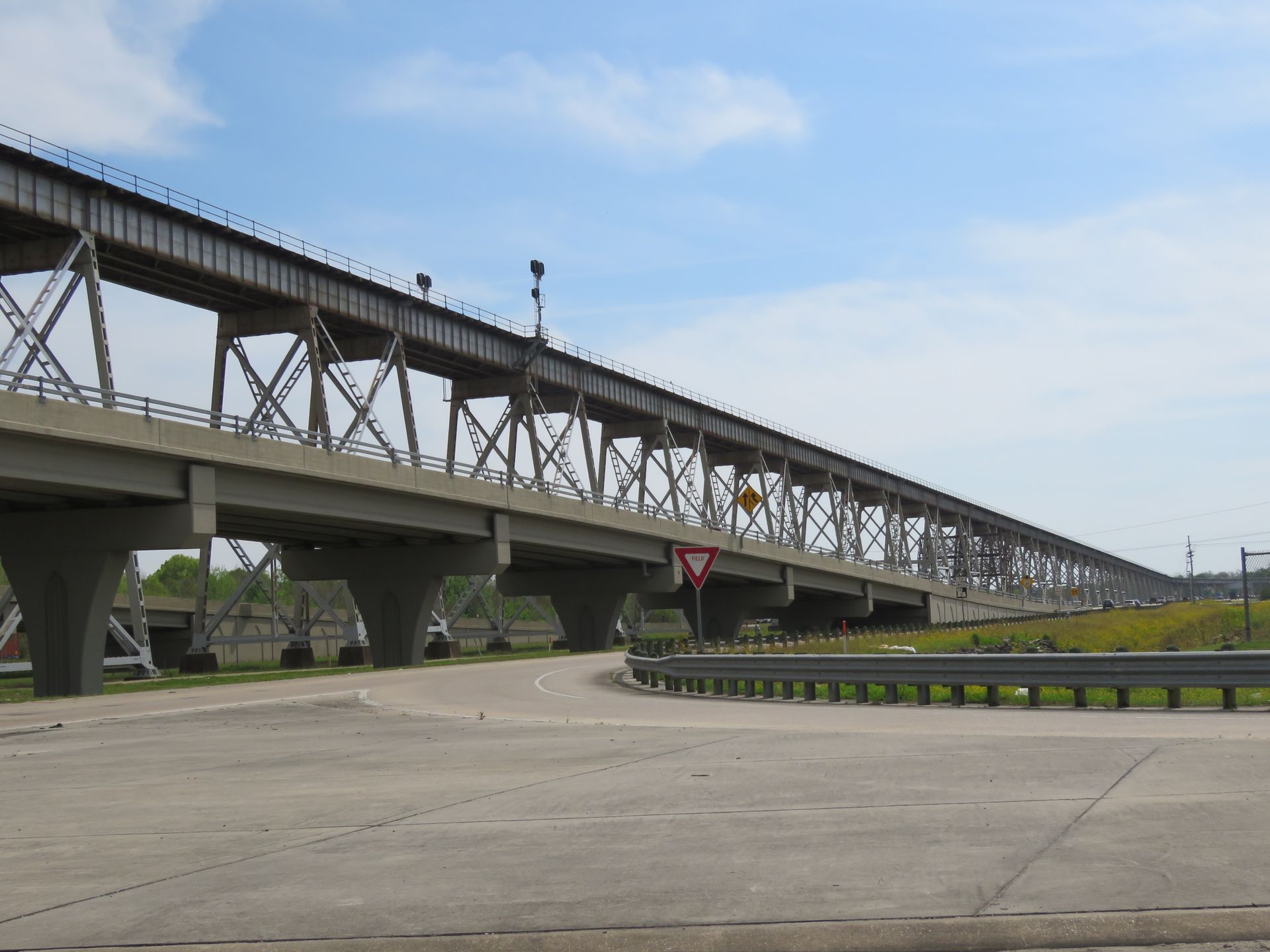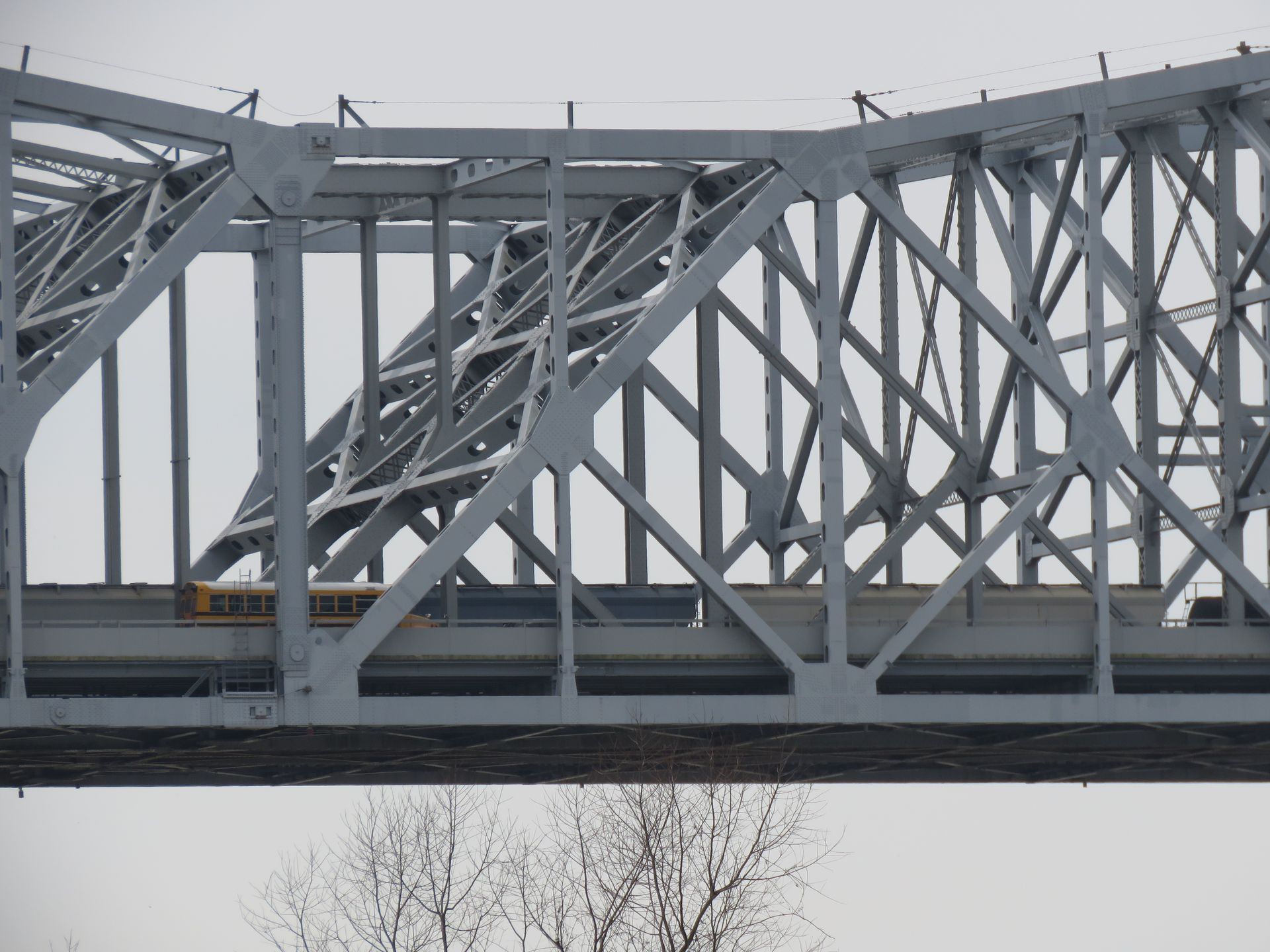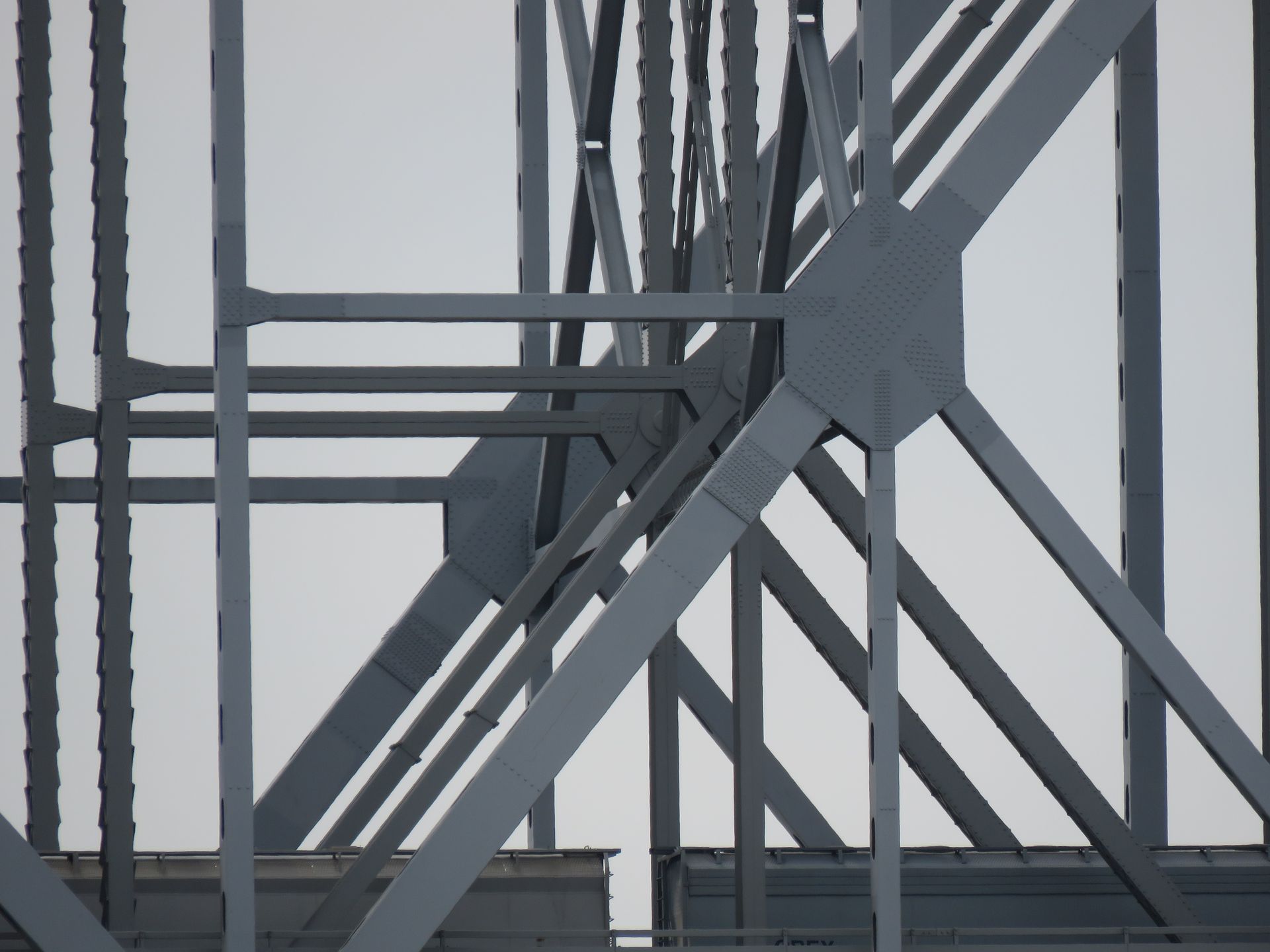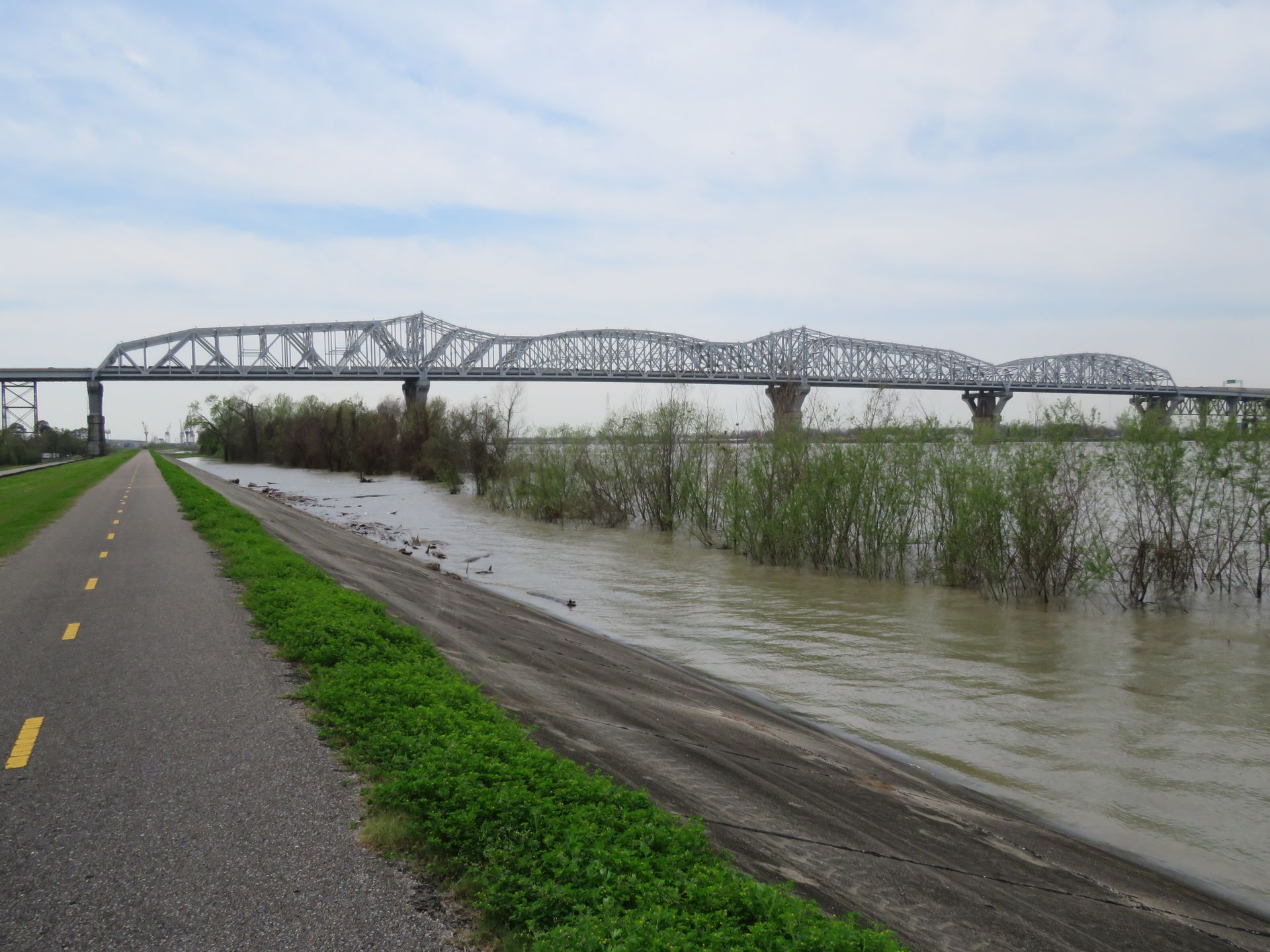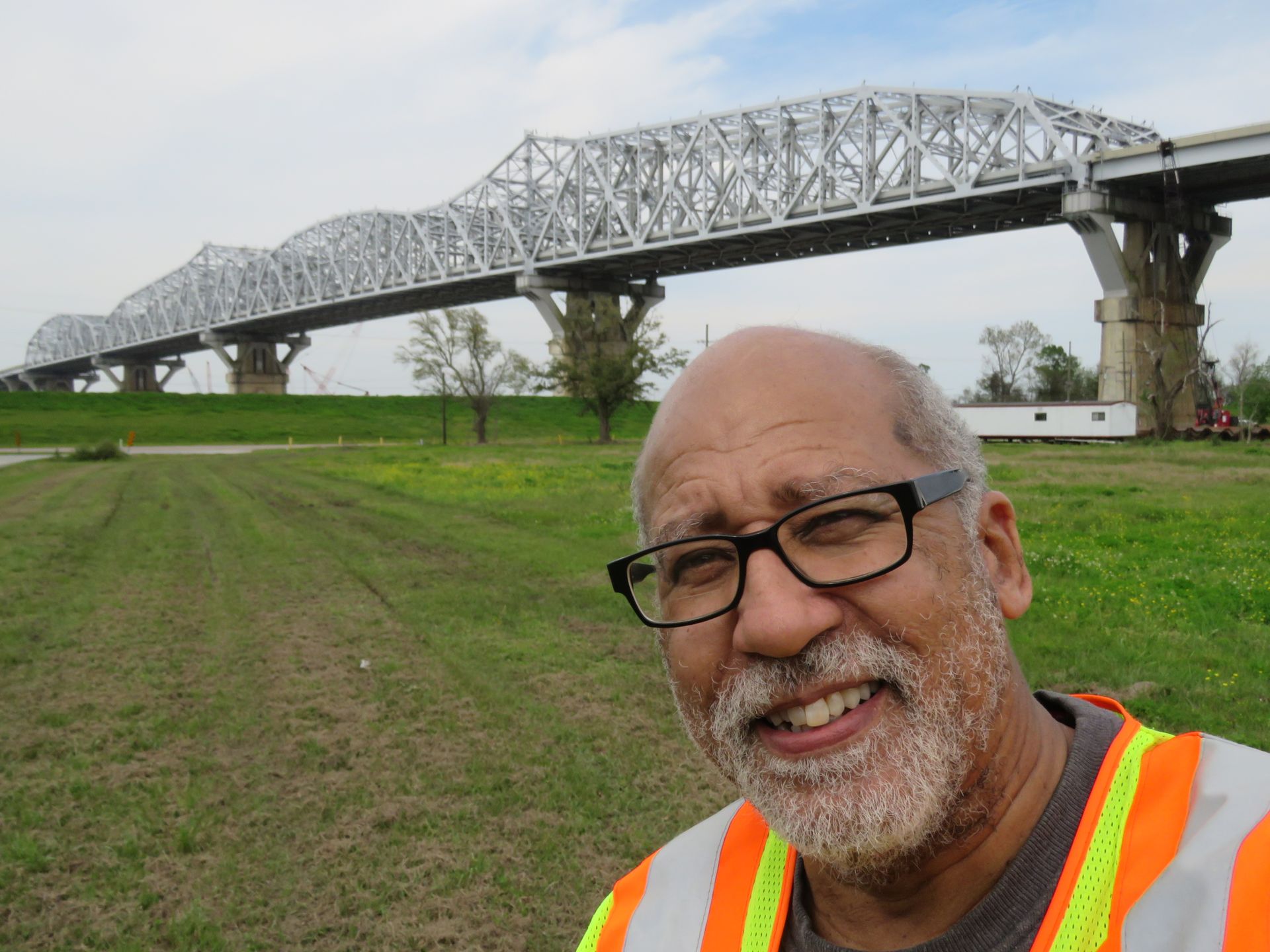BUILDING
BRIDGES
THE IRON AND CONCRETE WINGS OF AMERICA
Huey P. Long Bridge, New Orleans, LA
This Spectacularly Heavy Bridge... is resting entirely on a bed of sand!
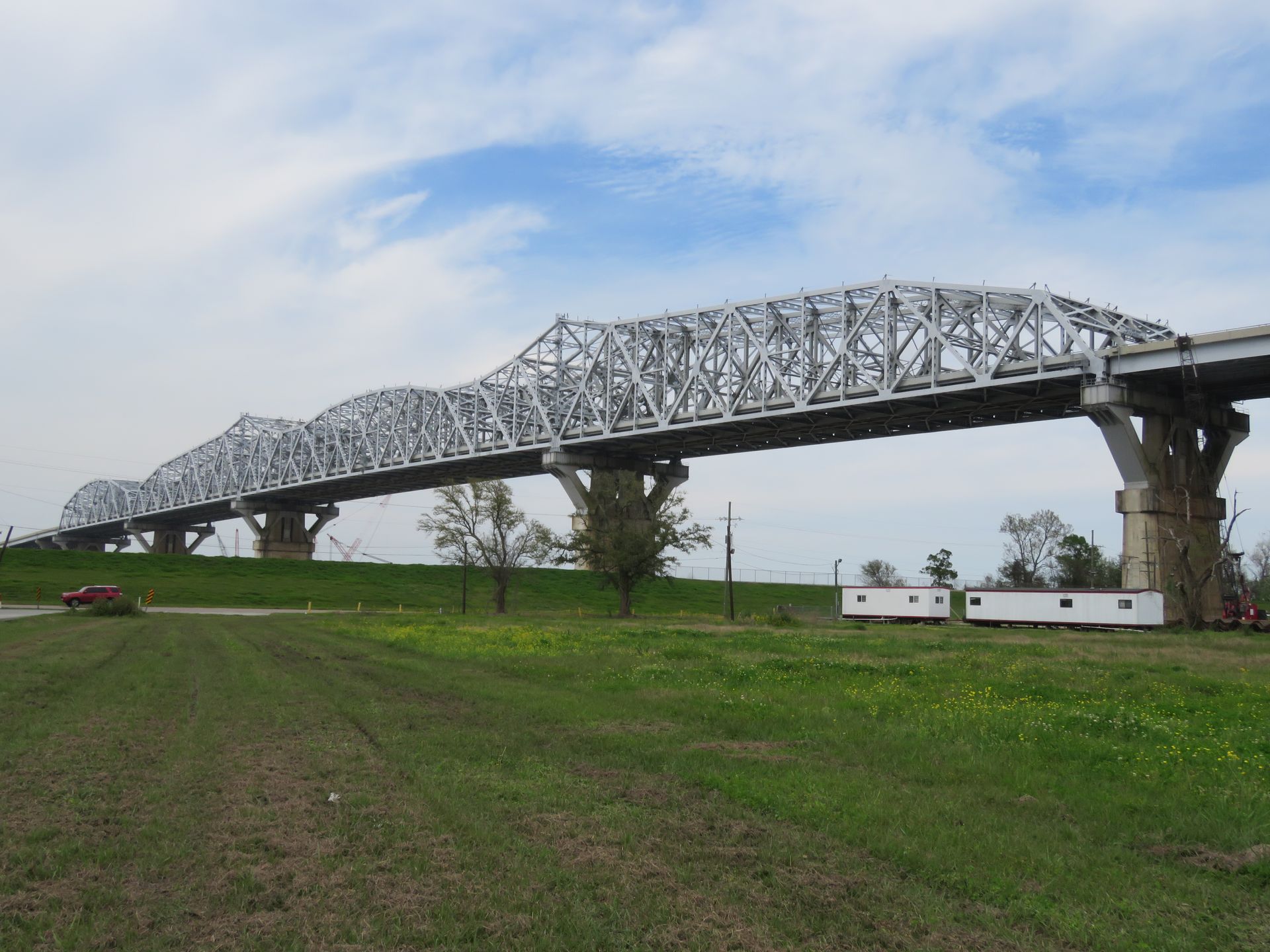
The massive Huey P. Long Bridge is a cantilevered, Warren-style through truss bridge across the Mississippi River, 10 river miles west of downtown New Orleans, Louisiana. Its cantilevers are a combination of Baltimore and Pennsylvania metal riveted through trusses, 36 in all. Finished in December of 1935, this crossing was originally built as a two-track railroad by the Southern Pacific Railroad (now Union Pacific) and was the first bridge built at the lower end of the Mississippi River. Within a few years of its opening, the structure was widened to accommodate two lanes of U.S. Highway 90.
At the time of completion, the bridge was the longest railroad bridge in the world, and with approaches, it comes in at just under 22,996 feet long (4.35 miles). Its four spans are 2,375 feet long and the longest barge span is 790 feet across the middle of the river. There are three separate river channels that flow underneath the bridge. It is still considered the world's longest steel trestle railroad bridge, but the nearby Norfolk-Southern Lake Pontchartrain bridge at 30,264 feet long (5.7 miles) is the longest railroad bridge over water in the world.
The road length on the bridge is just over 8,000 feet, with gradual inclines on either side of the river.
Huey P. Long was governor of Louisiana until his assassination in 1935. This bridge is one of two in Louisiana named after him, the other located on U.S. 190 in Baton Rouge.
The Huey P. Long Bridge was built by the McClintic-Marshall Company of Pittsburgh, Pennsylvania and the American Bridge Company of New York. It was designed by famed engineer Ralph Modjeski, designer of the McKinley Bridge in St. Louis, the Harahan Bridge in Memphis, and the Benjamin Franklin Bridge in Philadelphia.
The Huey P. Long Bridge was built during a time when train and vehicular traffic often shared the same crossing. Bridges like the McKinley Bridge and the MacArthur Bridge both in St. Louis, the Harahan Bridge in Memphis, the Manhattan Bridge (also engineered by Ralph Modjeski), the Clay Wade Bailey Bridge in Cincinnati, and the Kentucky-Indiana Bridge in Louisville were all examples of original rail bridges, widened and modified years ago to give river communities their first vehicular traffic bridges.
The Huey P. Long bridge foundation is different from most substructures. Since normal bedrock is about 1,000 feet beneath the river bed at this location, the bridge supports are built on a fine sand mass that holds each pier in place. Stability of the piers is determined by the massive amount of steel and concrete, i.e. the sheer weight of the bridge holds it in place. About 17,000 tons of steel comprise the superstructure.
The bridge is owned by the New Orleans Public Belt Railroad and carries two tracks of the Union Pacific Railroad across the river, along with U.S. 90 (expanded to six lanes in 2013) and its average of 37,000 vehicles per day.
